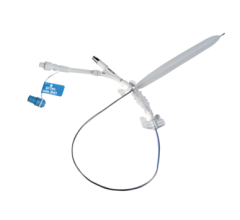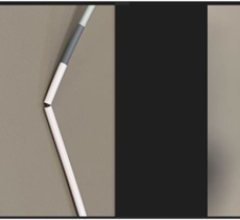
Image courtesy of Medtronic, Inc.
December 29, 2014 — The results of a study published online and in Circulation indicate that a medical device from Medtronic, Inc., the IN.PACT Admiral drug-coated balloon (DCB), outperformed standard balloon angioplasty in the treatment of symptomatic peripheral artery disease in the upper leg, specifically, the superficial femoral and proximal popliteal arteries.
Patients in the study's DCB group experienced the highest rate of primary patency and the lowest rate of clinically driven target lesion revascularization at 12 months ever reported from a study of interventional treatments for this common form of peripheral artery disease.
The authors of the article "Drug-Coated Balloon versus Standard Percutaneous Transluminal Angioplasty for the Treatment of Superficial Femoral and/or Popliteal Peripheral Artery Disease: 12-Month Results from the IN.PACT SFA Randomized Trial" state that the IN.PACT Admiral DCB "stands to become an important treatment option for patients with superficial femoral and popliteal artery disease," which affects millions of people worldwide.
The In.Pact Admiral DCB received the CE (Conformité Européene) mark in 2009, but remains an investigational medical device in the United States, where it is under review by the U.S. Food and Drug Administration (FDA). Outside the United States, the device has been used to treat peripheral artery disease in nearly 100,000 patients, more than any other DCB.
The In.Pact SFA Trial enrolled 331 subjects at 57 sites across Europe and the United States. All study subjects were randomized to treatment with the DCB or standard balloon angioplasty. On the key endpoints:
· The clinically driven target lesion revascularization (CD-TLR) rates at 12 months were 2.4 percent for the DCB group and 20.6 percent for the PTA group (p<0.001). CD-TLR accounts for repeat procedures, or reinterventions, due to recurrent symptoms related to the treated lesion.
· Primary patency rates were assessed at 12 months of follow-up and showed a highly statistically significant difference: 82.2 percent for the DCB group and 52.4 percent for the PTA group (p<0.001). Presented at the Charing Cross international symposium in April, the Kaplan-Meier survival estimates for primary patency at day 360 were 89.8 percent for the DCB group and 66.8 percent for the PTA group. Primary patency means a sustained restoration of adequate blood flow through the treated segment of the diseased artery.
For more information: www.medtronic.com


 June 13, 2024
June 13, 2024 








